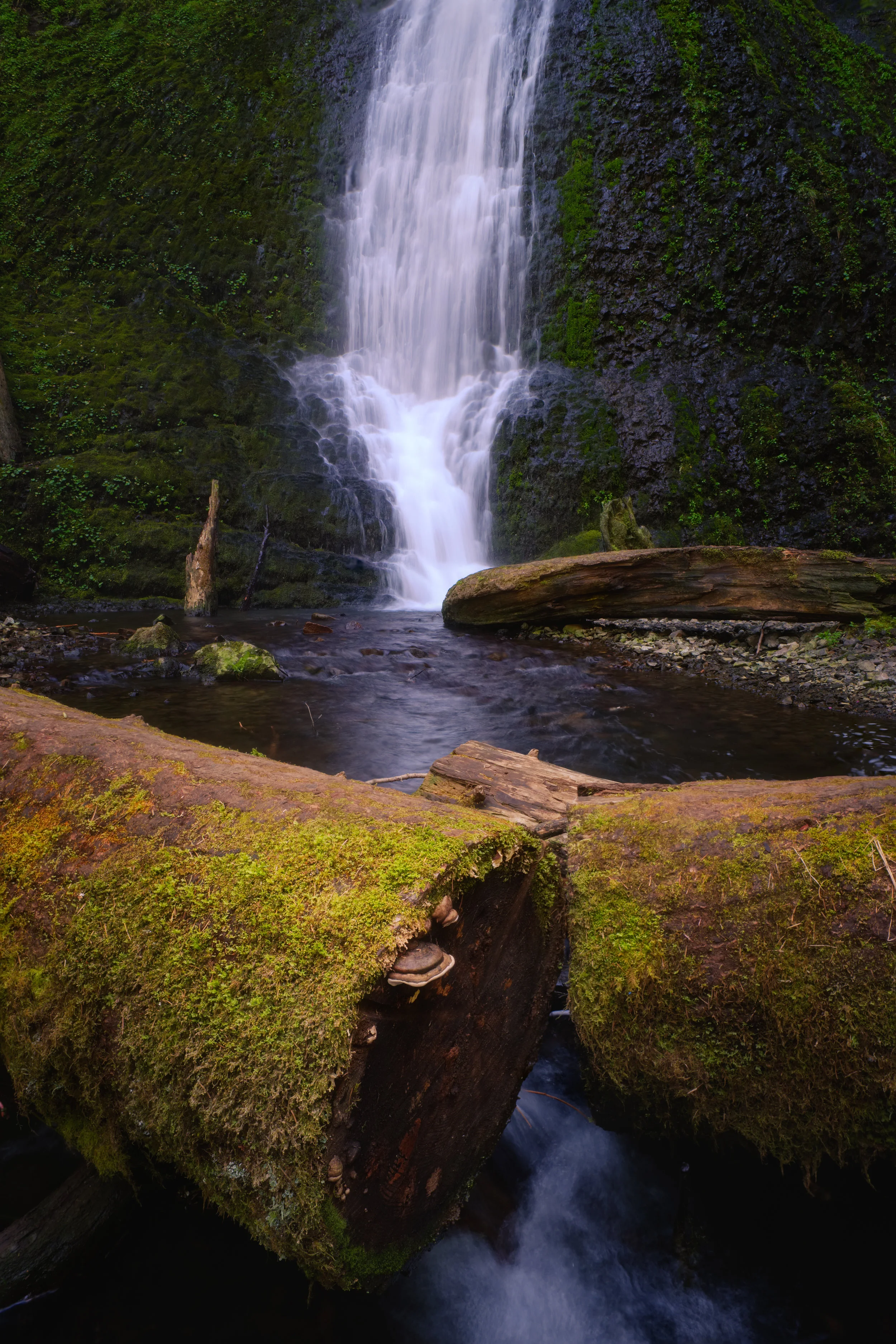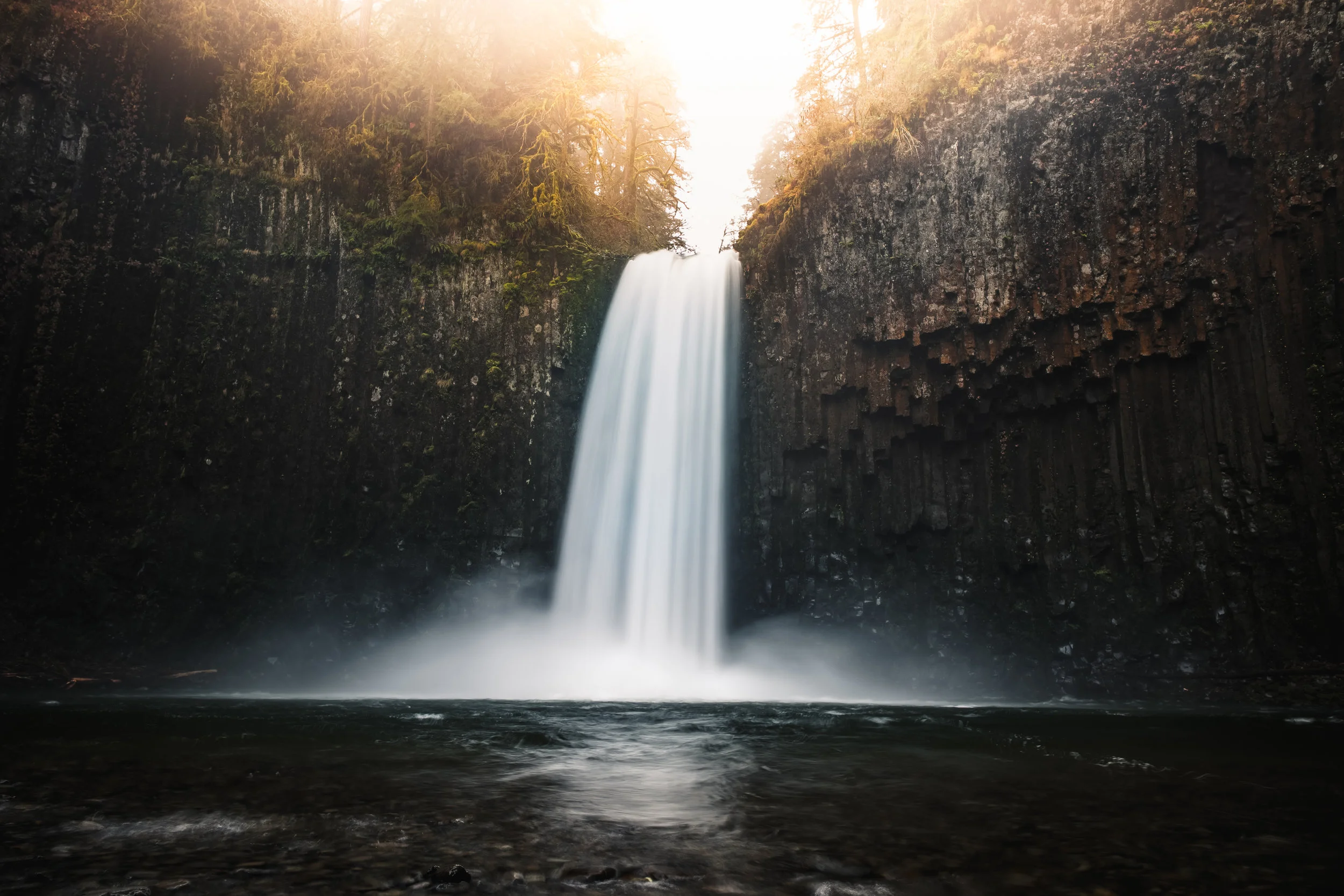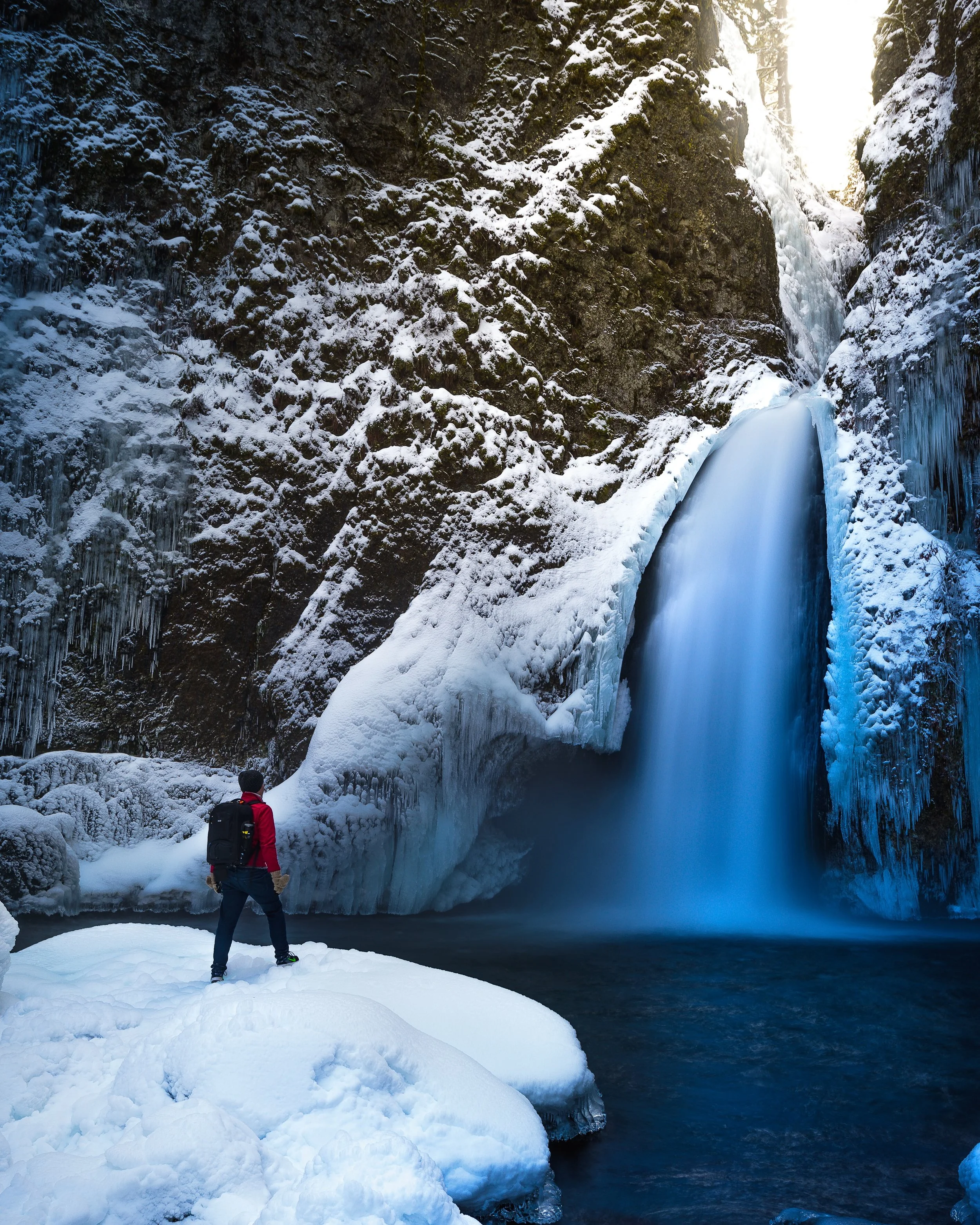Shooting Waterfall Photos is not something easy to do in a consistently compelling way. Having been able to live in the PNW for a little while I have compiled a list of tips for success and when/where to use them around these majestic pieces in nature! Along the way are some examples of what I consider to be my best waterfall works as examples.
- Shoot at an angle
- If you want to shoot a dynamic image then lines that are diagonals will help to demonstrate this. As dynamic as many waterfalls are this can be a great way of composing a dramatic looking image.
- Include elements of surroundings
- Most waterfalls will have foliage, rocks, and trees around to include in your compositions. You can use the to anchor the image or even to frame parts of the falls adding context to the image.
- stand further back and zoom in with a telephoto
- This method will allow you a compressed view of the area and the waterfall within it. This can help with picking out the absolute best parts of the area excluding the less interesting. As Nick Page says "shoot less of the mess"!
- get in the water directly in front of the falls
- In contrast to the prior tip you can get right into the landscape allowing a very immersive composition focusing on the flow of the waterfall. It can be an awesome experience to be in the water shooting, but it can also be a challenging one being safe, keeping the tripod steady, and clearing the front element of the lens clear of mist. (tip: use a blower in very wet conditions to keep the front element clear as cloths will saturate quickly)
- use the water as a leading line
- This can be done with the top of the waterfall or the bottom of your frame to lead the eye. Symmetry can be really nice with this one when using strong vertical lines. Using the stream is especially powerful though when the viewer can see the source of the water through to the bottom of your photo.
- exclude the sky
- I think this one is fairly straightforward as waterfalls are best shot during overcast uninteresting skies. Unless you cannot exclude the sky for whatever reason shoot the scene without the sky protruding into frame. There are places this is unavoidable and exceptions to the rule, but unless the sky is on fire or very unique light is happening it is best left out here.
- pick a favorite part of the waterfall and focus on that
- Some scenes like the one shot above will compliment their surroundings well entirely. Other waterfalls may be less photogenic in nature though. In these situations it is best to focus in on what drew you to take the camera out. Is it the lower half where it creates a nice shape? The size? Foliage? Only include those elements in the frame.
- use a circular polarizing filter
- Just use one... I will explain. If you are photographing a waterfall there is likely to be a thin layer of water over everything creating distracting glare. A circular polarizer will cut down on those distracting hot spots taming the contrast in sometimes challenging scenes. USE IT!
- Shoot the light
- This is a good universal tip, but you wouldn't shoot a sweeping landscape in the middle of a blue bird day would you? Don't shoot in the forest or waterfalls on these days either. Go early or later in the day during cloudless days and on overcast days use the light all day!
- make sure your tripod is sturdy
- If you have a flimsy tripod in the field you are in trouble anyways. Many of the best compositions with waterfalls are going to emphasize this issue. Keep the camera steady and spend money on a sturdy tripod that you can get really high or put low to the ground.
- get really low/really high
- Building off the last point on the tripod being able to shoot high and low you should be able to change your point of view to emphasize/diminish parts of the frame. Look at the elements in your scene and figure out what you want to include in the story and how much of a role they play.
- work the scene
- Walk up to the waterfall and let it soak in for a while before shooting. Walk around the area keeping your eyes on how each step changes the view. This can really develop your eye! It will also increase the number of portfolio pieces you shoot. There are plenty of times I shot an area many others have shot. They took one obvious composition before moving on and missed out on something even nicer 20 feet to their left!
- framing the waterfall naturally
- Use your area to frame the image with trees. plants, rocks, etc... It gives a nice boarder adding to the narrative you are guiding the viewer through. This composition style make the image feel like a window into the waterfall and a 3-D effect
Thank you for reading! I hope you got something valuable from this blog post. : )











